Abstract
1. Male and female Scottish Blackface sheep were shorn and exposed for 2 weeks either to a thermoneutral temperature (+30° C), to chronic cold (+8° C) or to +30° C interrupted by daily short cold shocks (-10° C). During and at the end of these conditioning treatments, the sheep also received two acute cold exposures (-20° C, 4 m.p.h. wind for 2-8 hr) 1 week apart. Some of these sheep and a fourth (control) group, were subsequently re-shorn and slowly cooled to +8° C.
2. Resting metabolism and the metabolic response to cooling (both inferred from heart rates) were increased by previous chronic cold treatment. Resistance to body cooling (measured during acute cold exposure) was generally increased by both chronic and acute cold, and non-shivering thermogenesis was probably induced in the female sheep. These effects were defined as acclimatization.
3. In contrast, cold shocks reduced the subsequent metabolic response to cold and encouraged facultative body cooling. This pattern of response (defined as habituation) therefore caused greater thermolability.
4. Habituation and acclimatization were antagonistic. Habituation was removed by acute cold exposure and, conversely, acclimatization was inhibited by short cold shocks.
5. There were sex differences in response but these were confounded by probable differences in insulation and in body condition (males thinner).
6. It was concluded that the induction of different forms of adaptation depended on the length, severity and frequency of cold exposures. Habituation to whole body cold exposure apparently involved central nervous system centres normally receiving peripheral cold stimuli.
Full text
PDF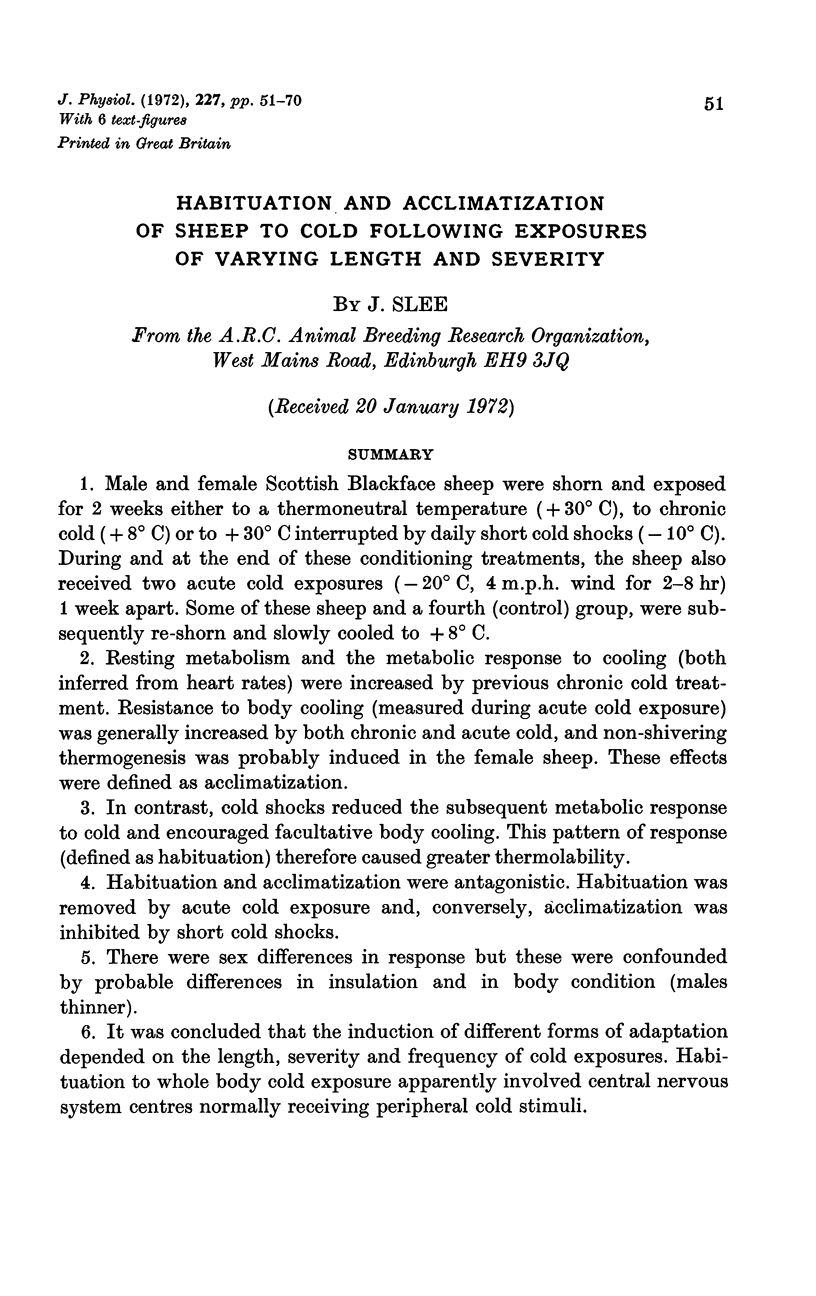
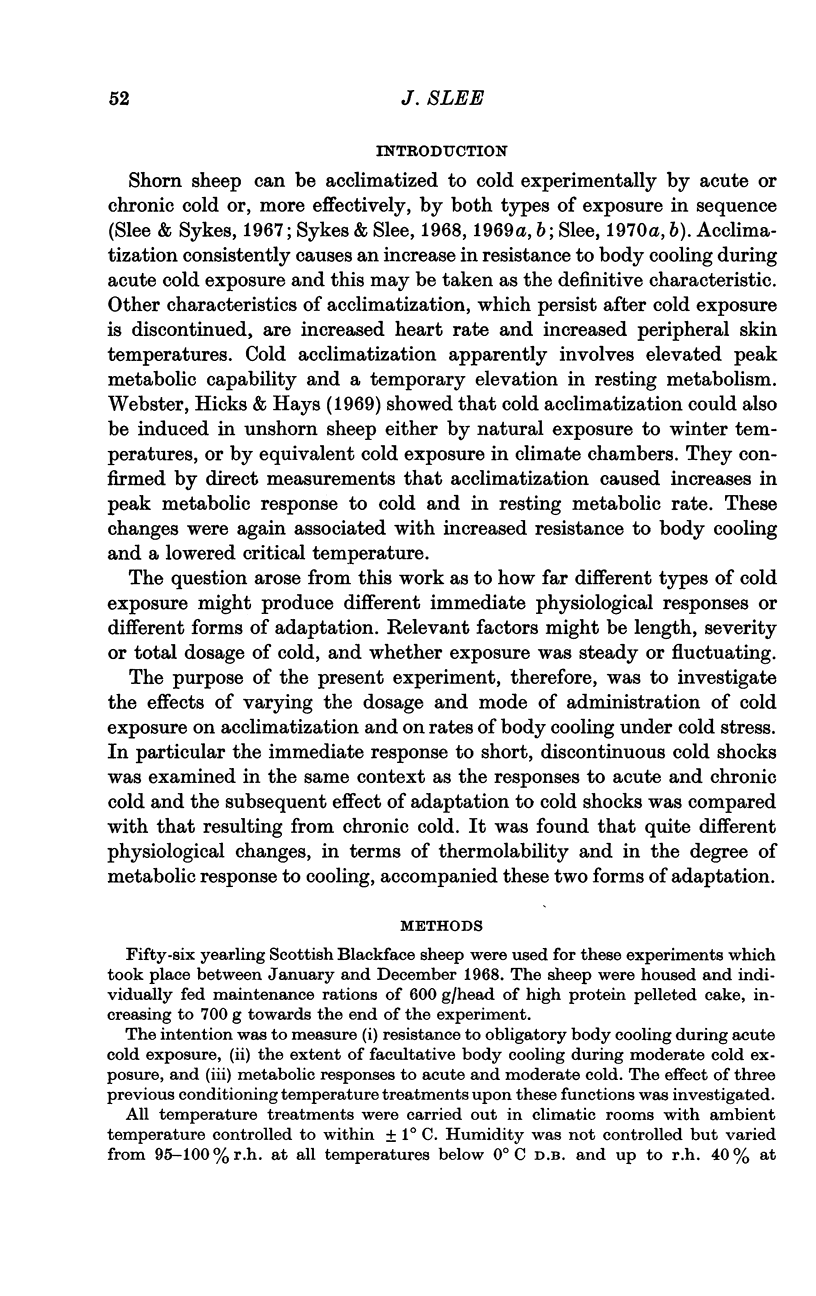
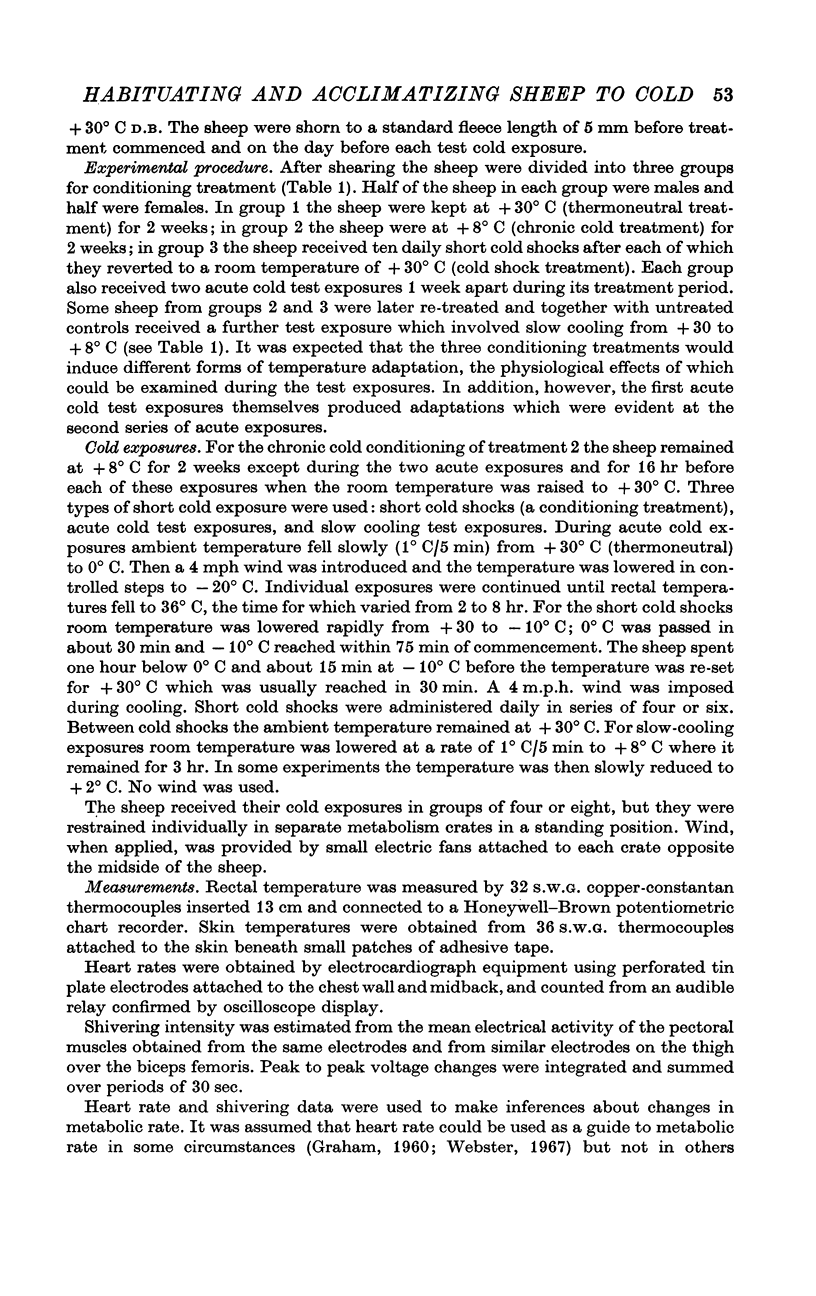
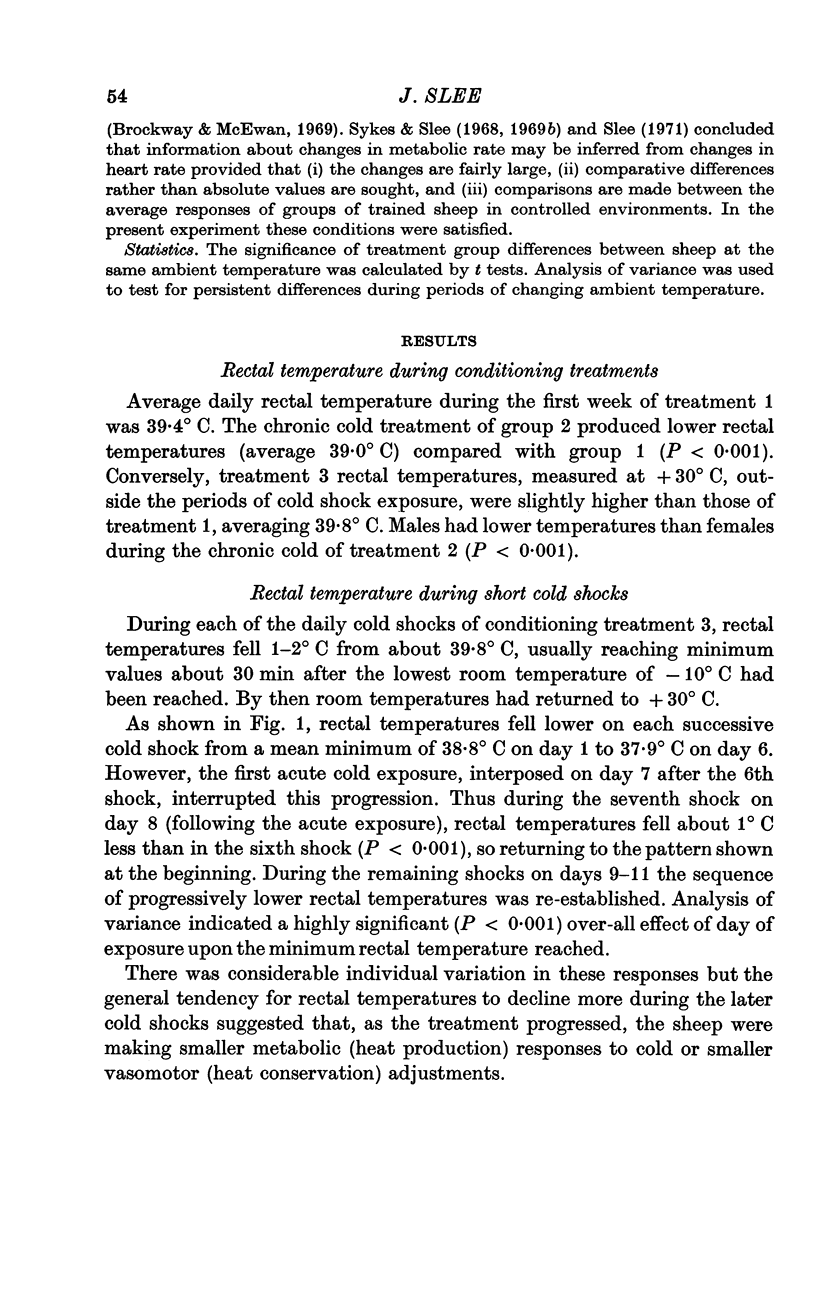
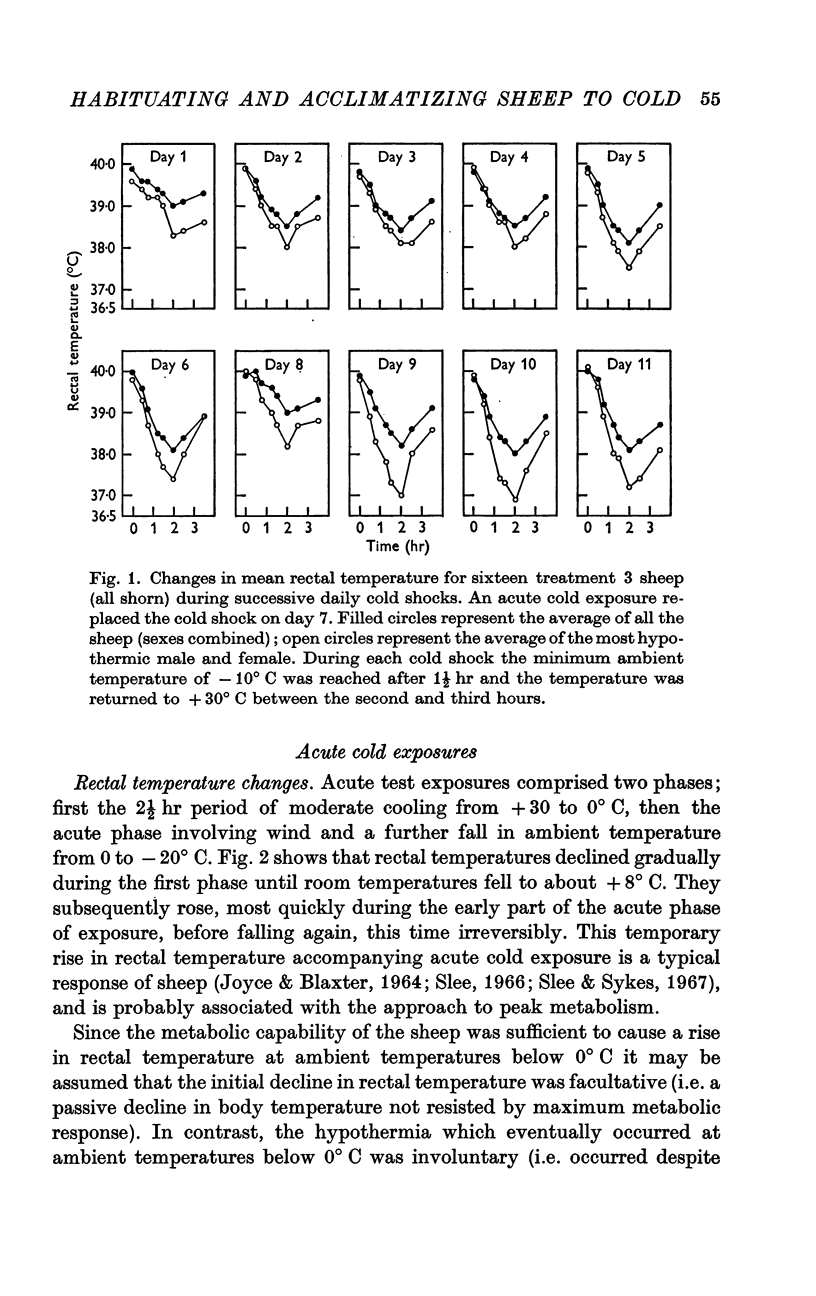
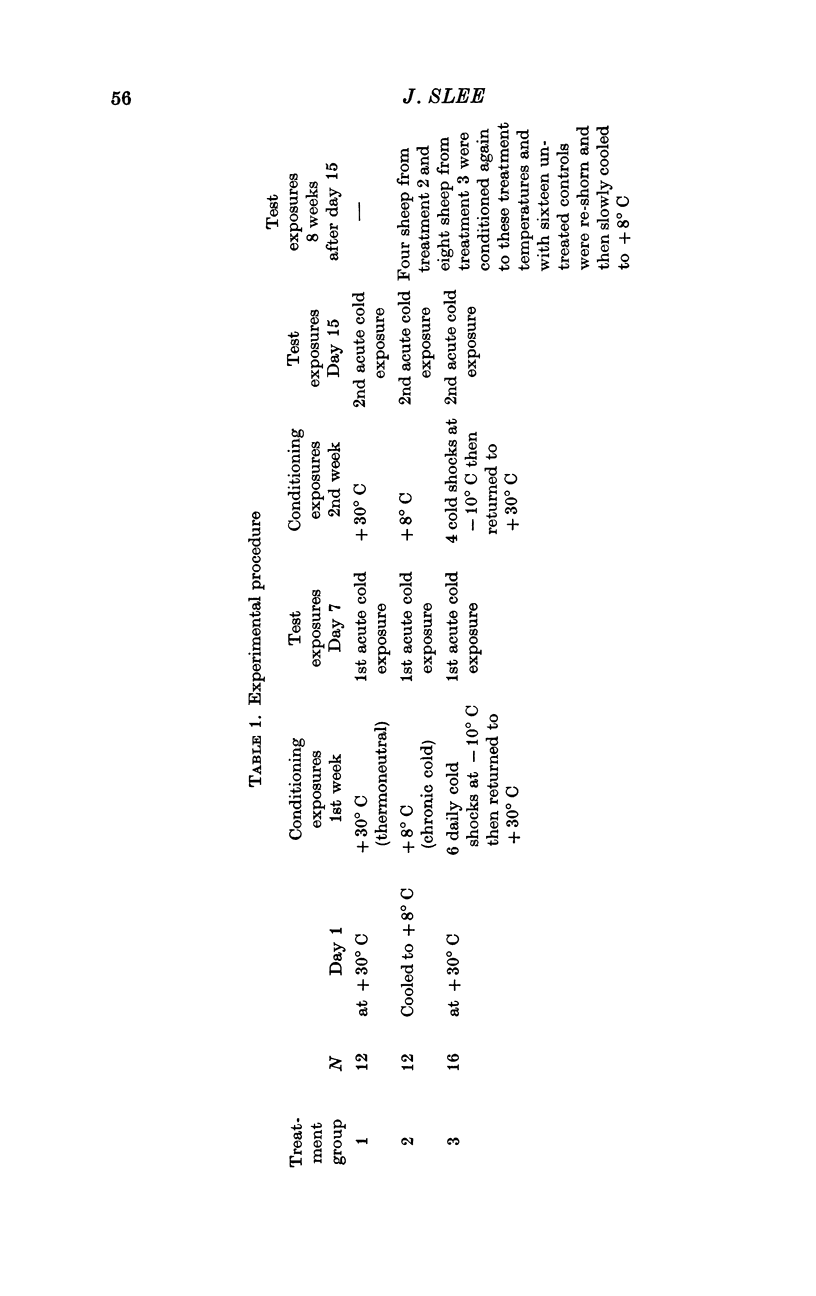
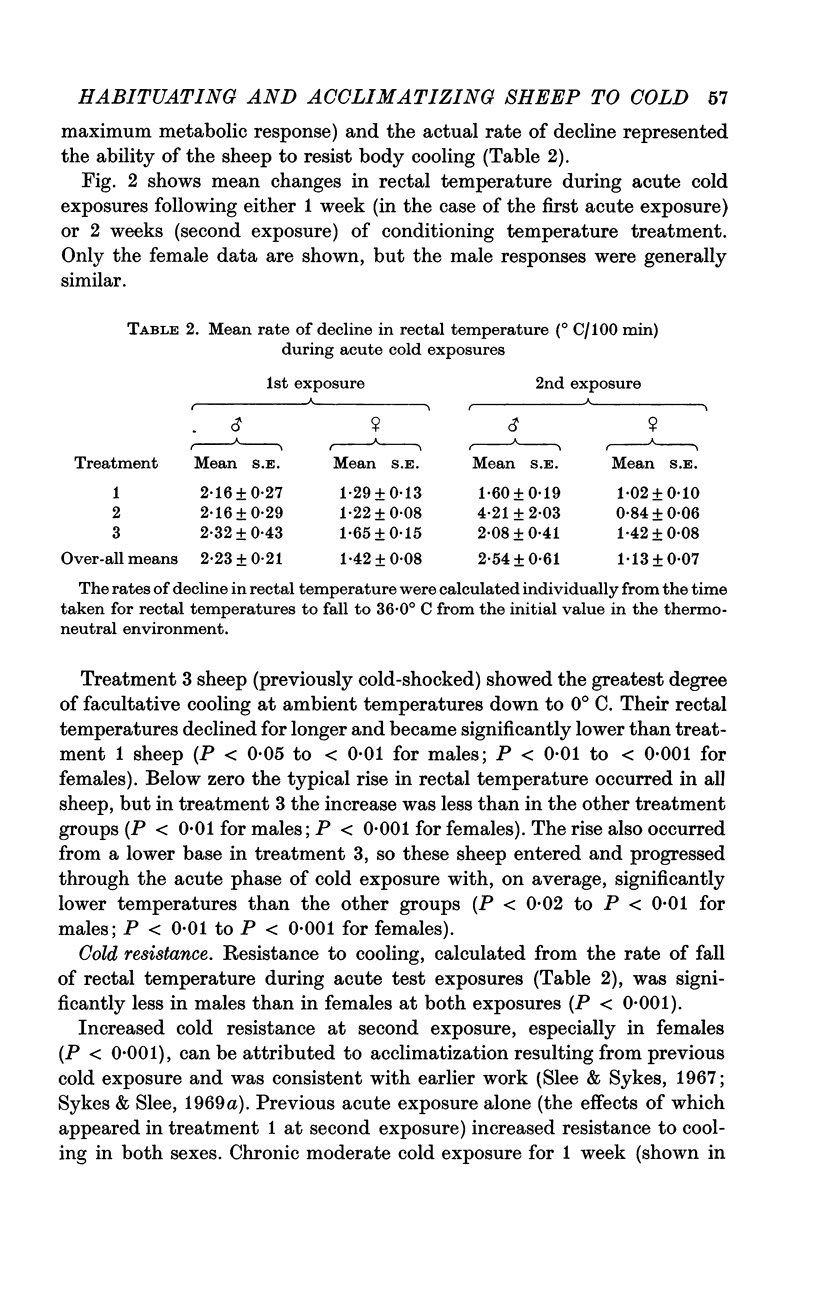
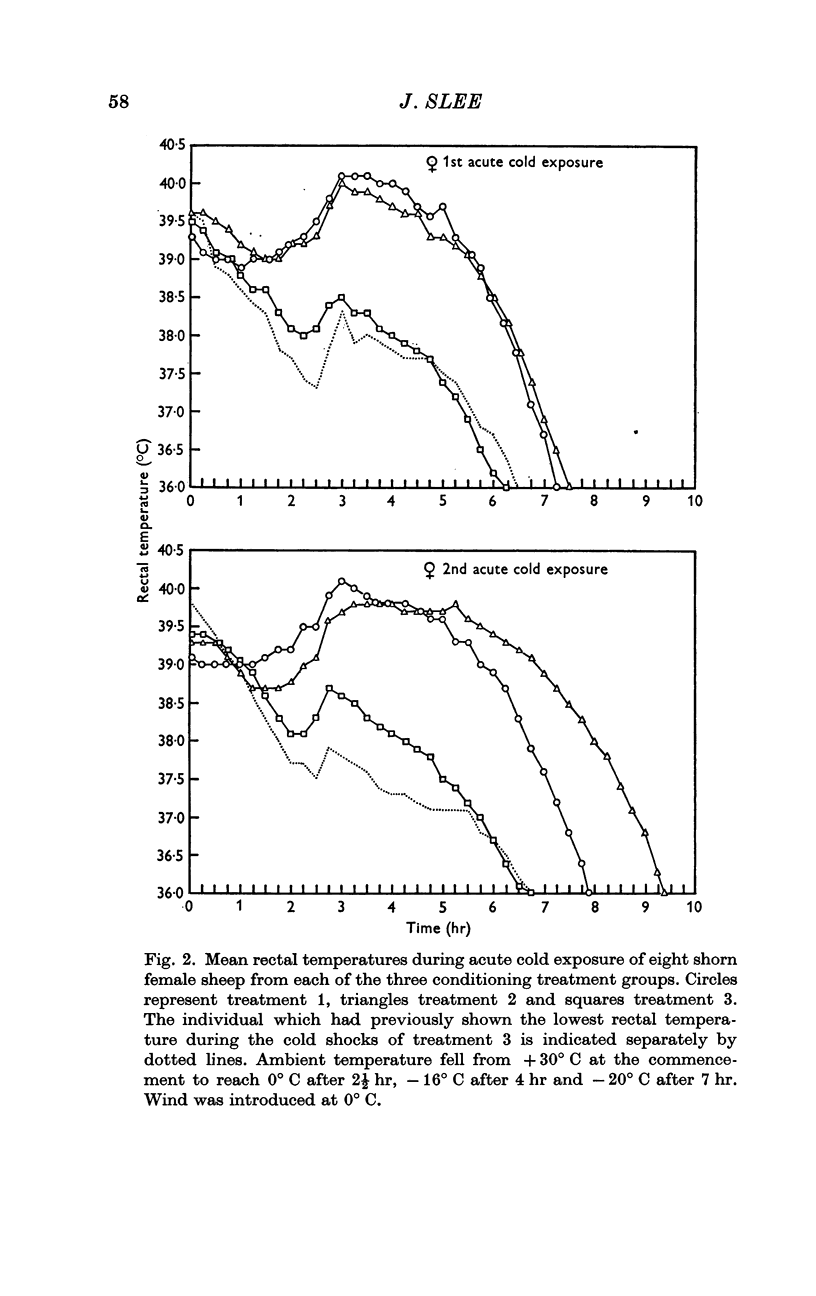
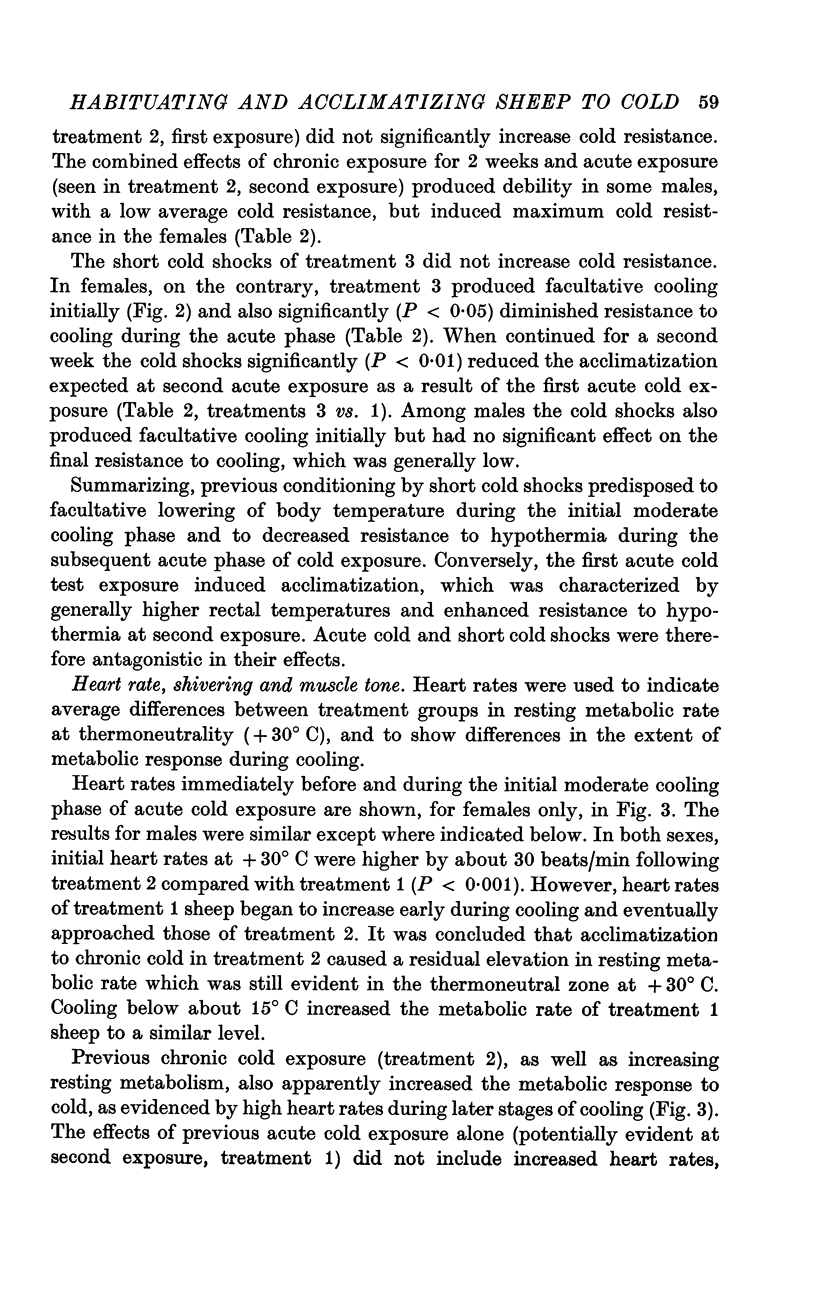


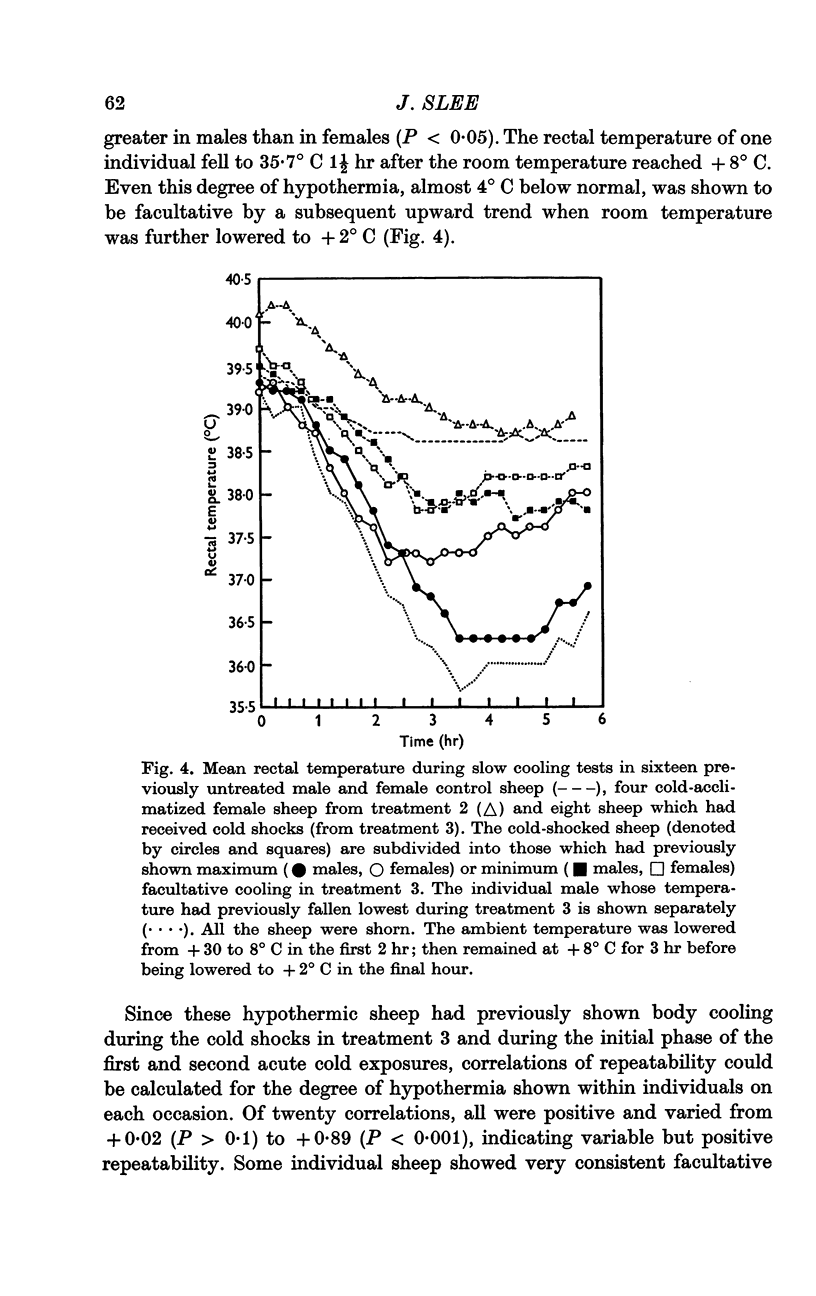
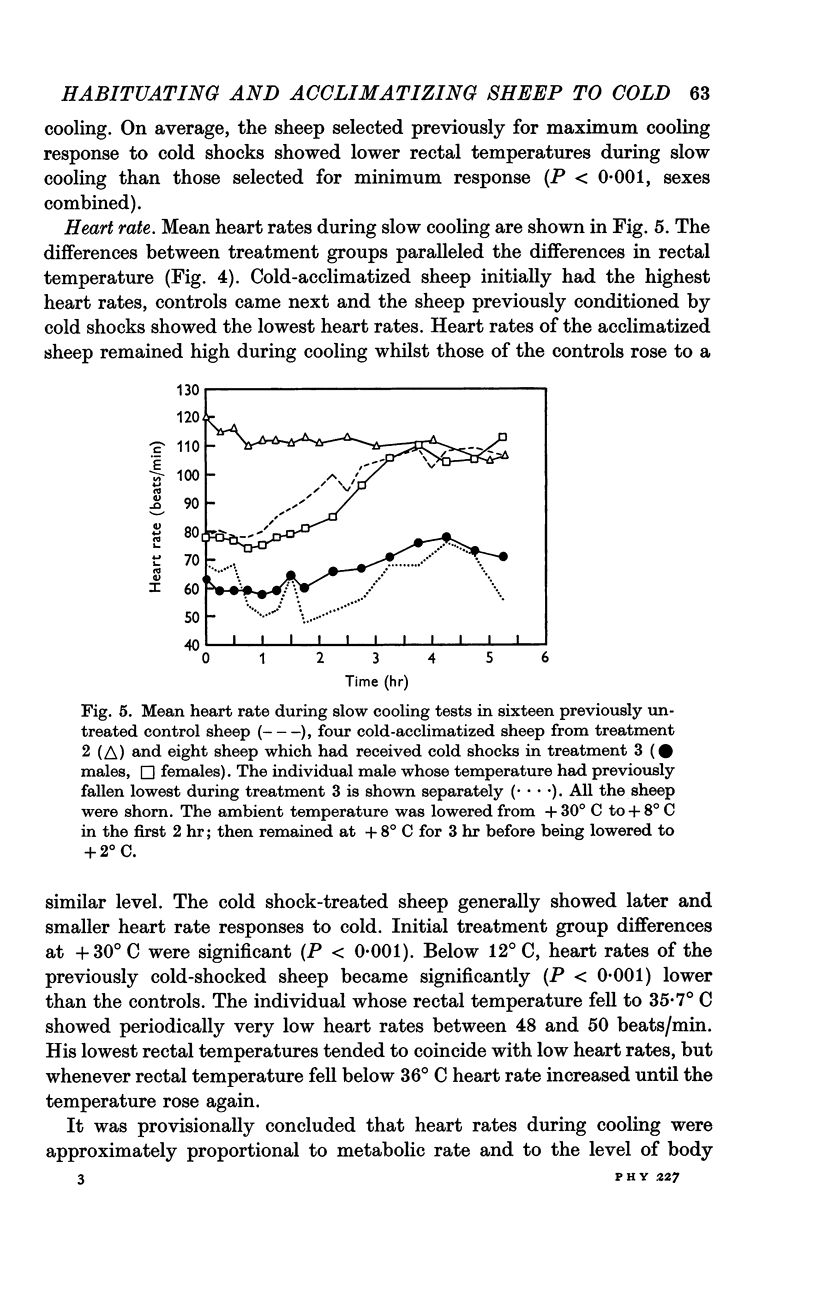
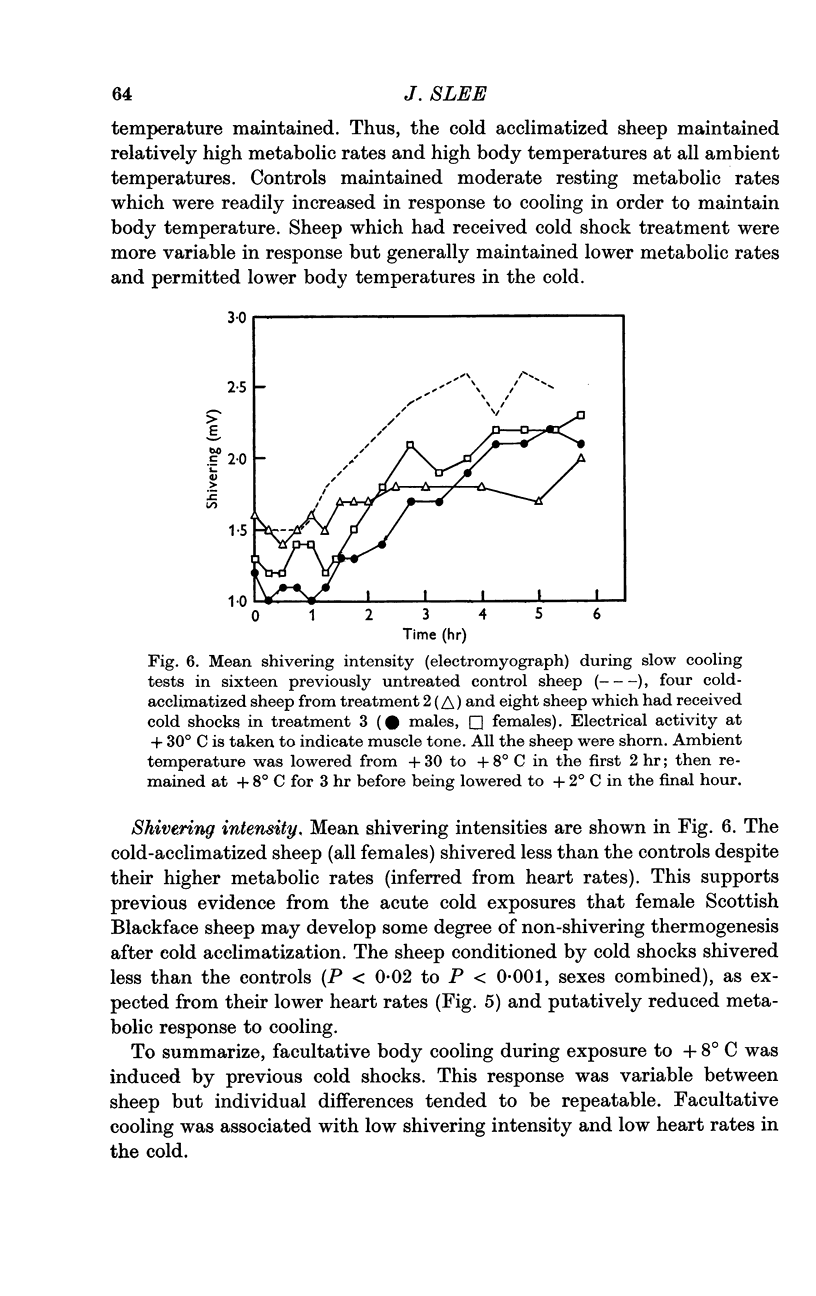
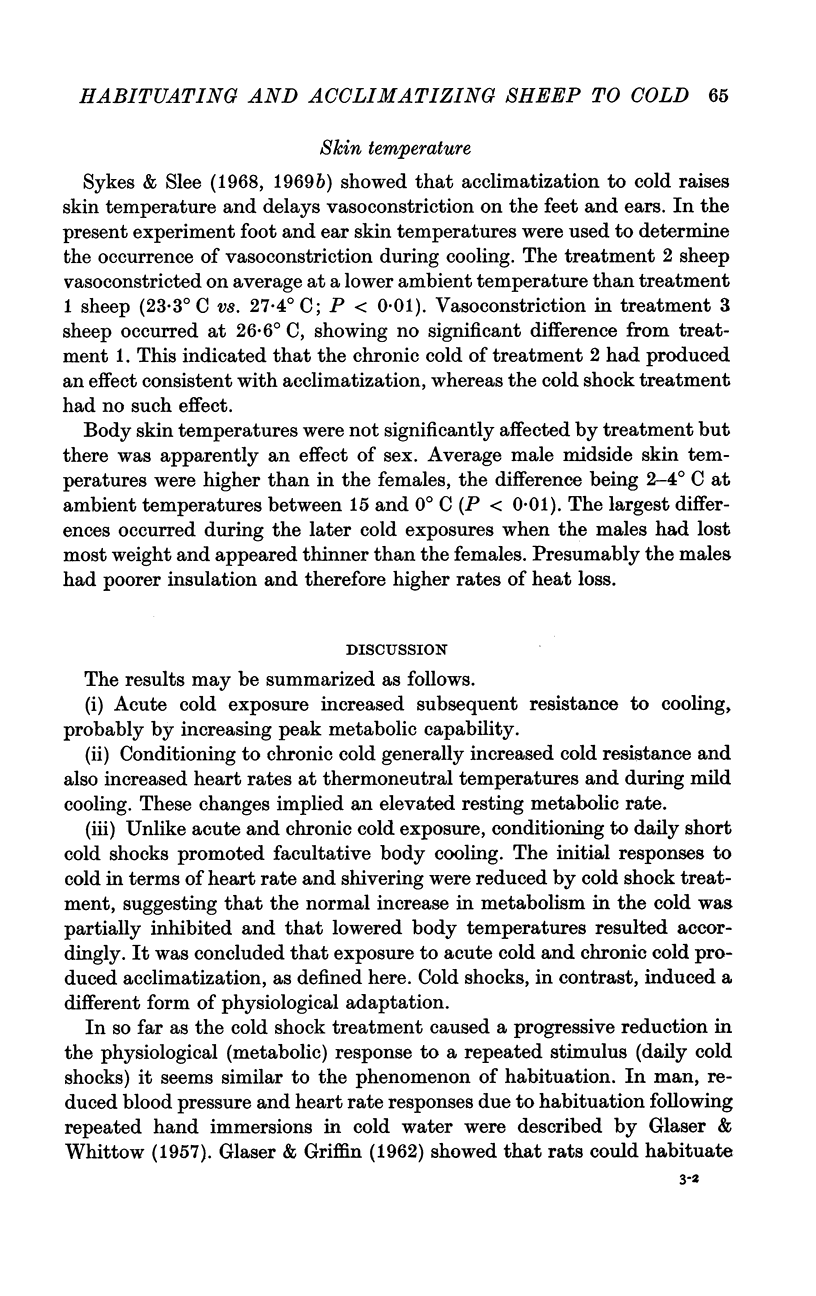
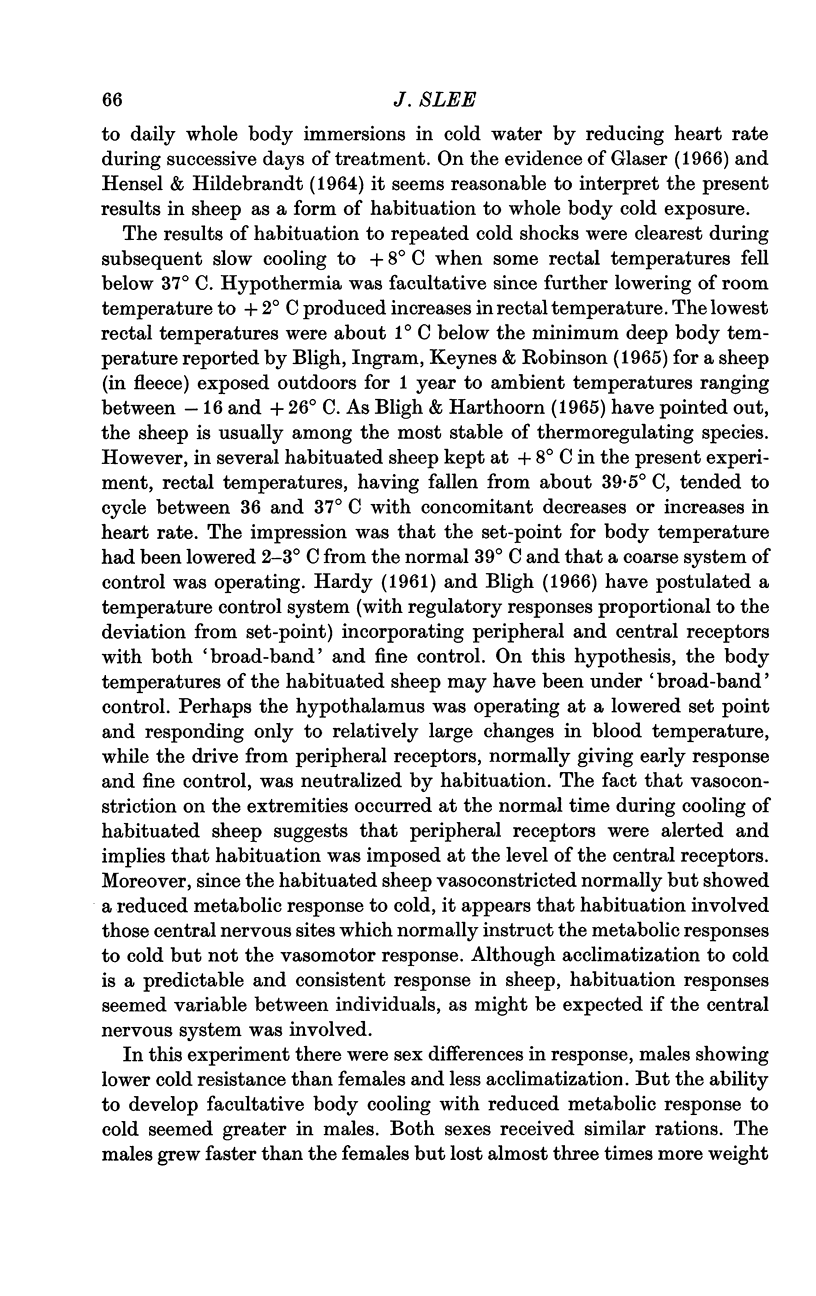
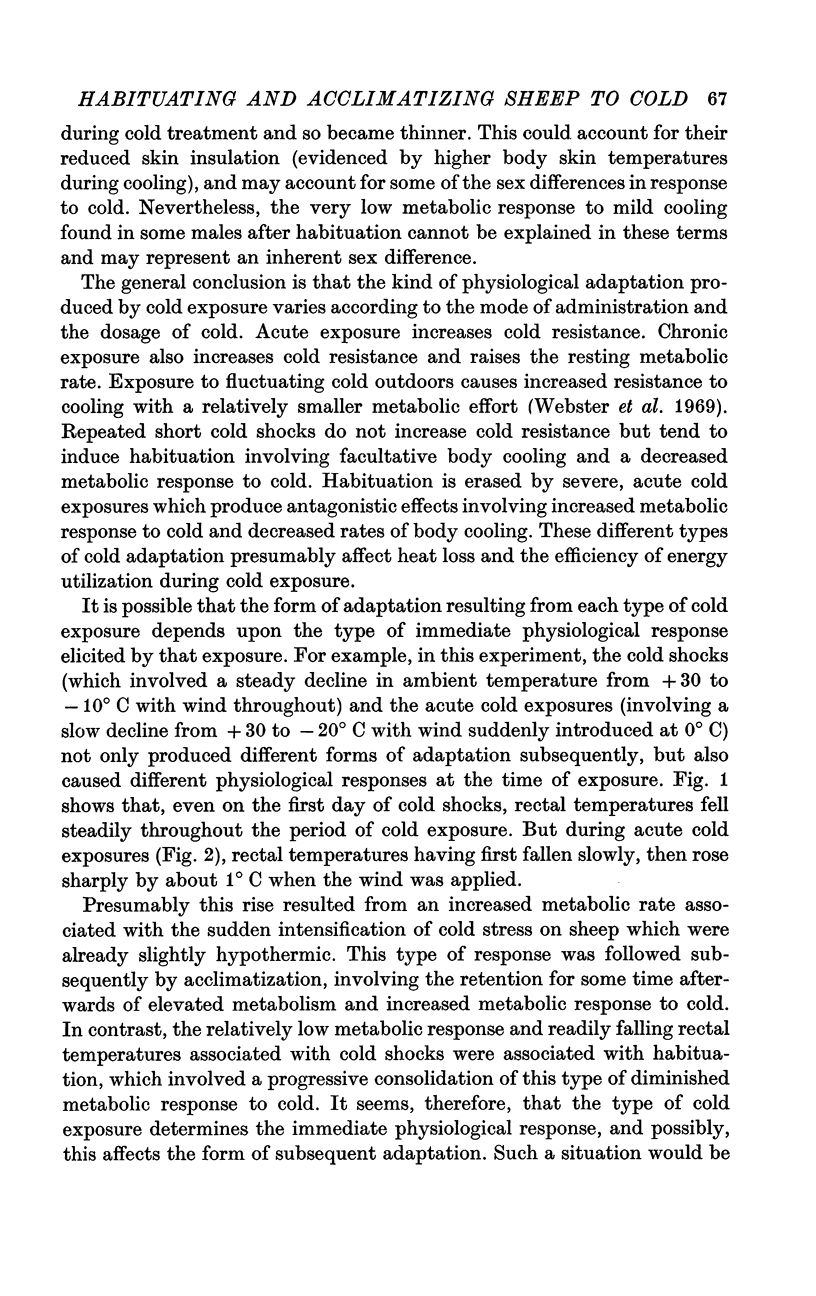
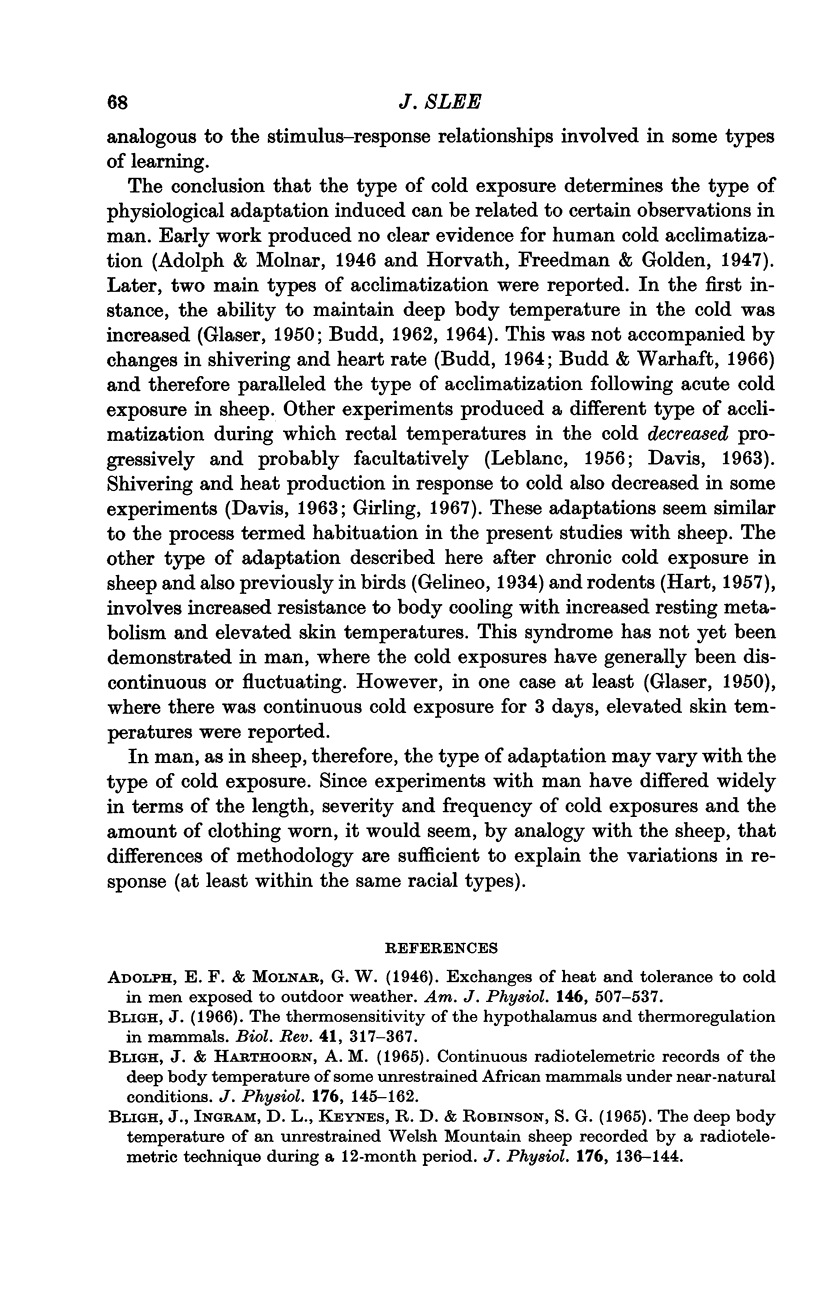
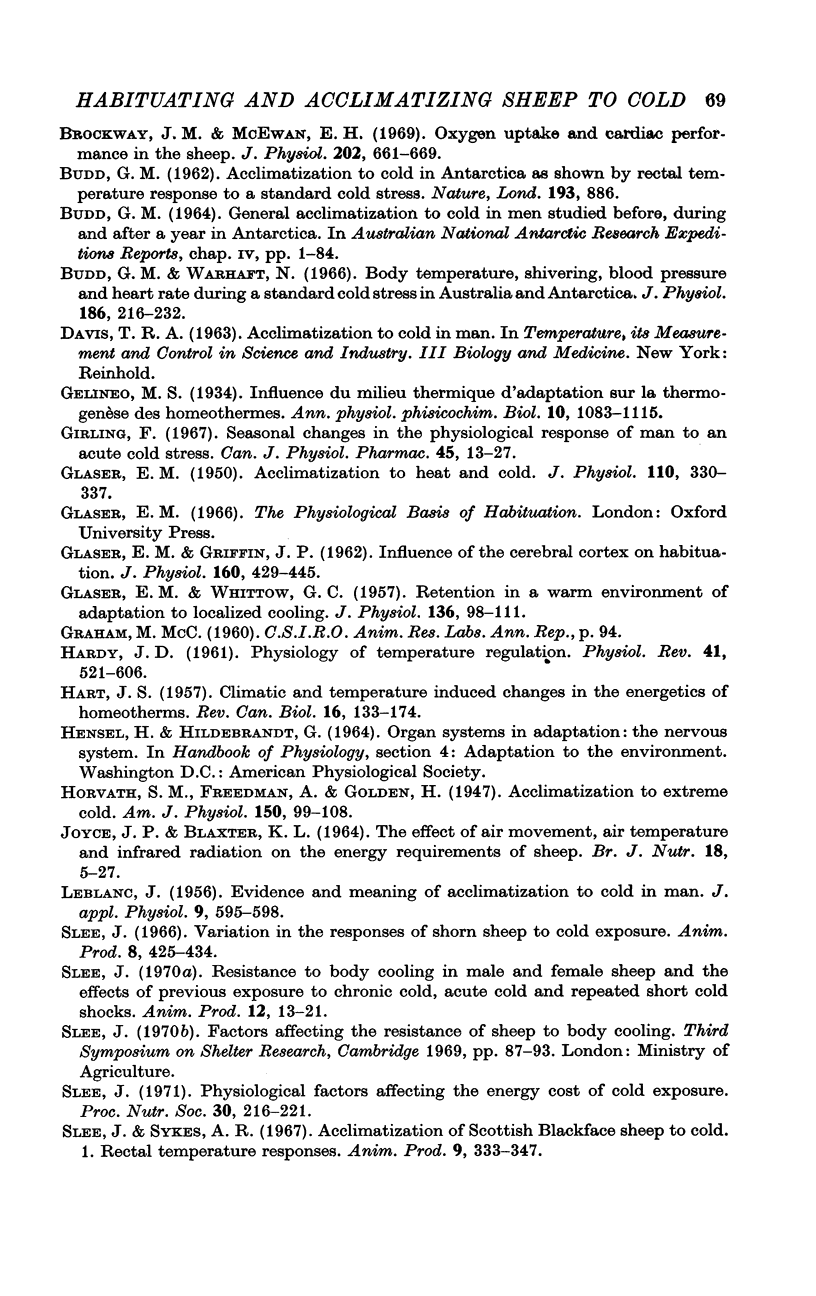
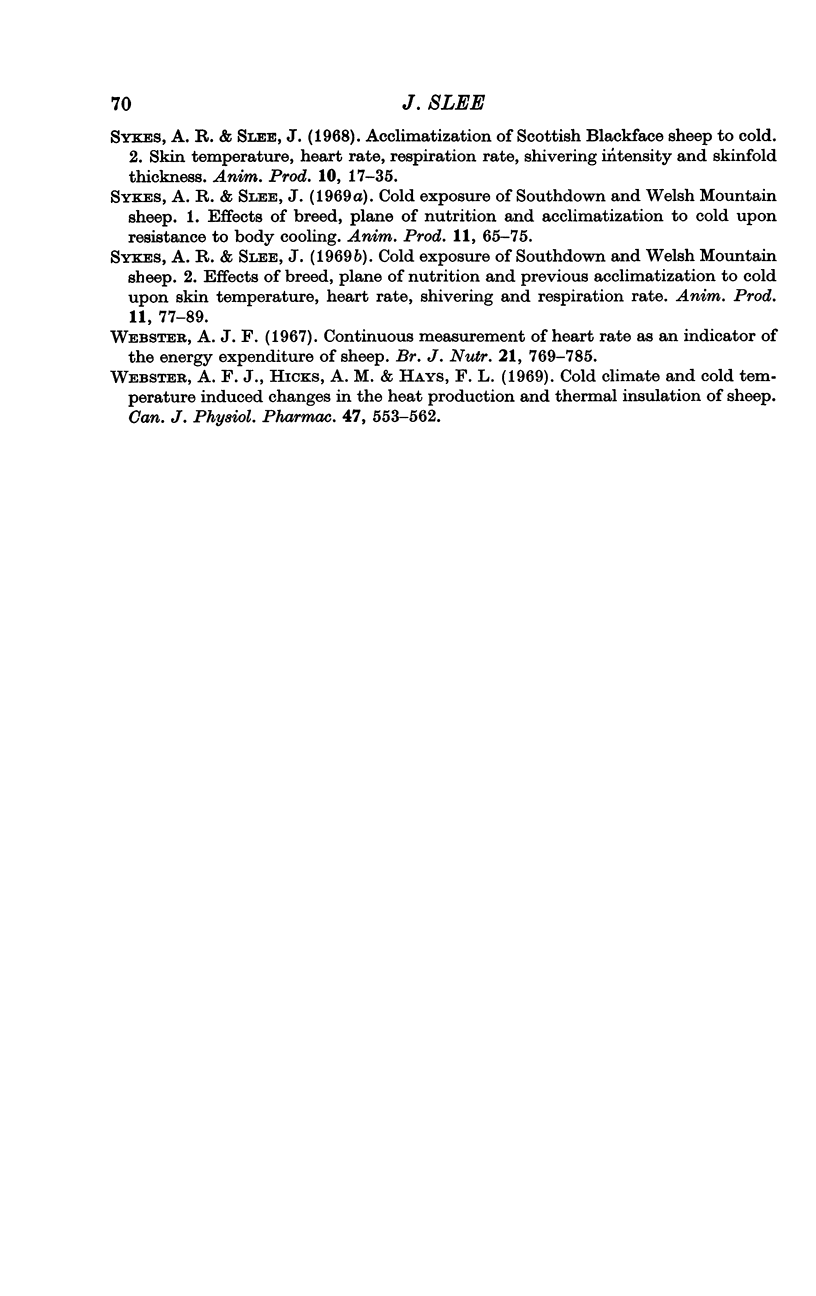
Selected References
These references are in PubMed. This may not be the complete list of references from this article.
- BLIGH J., HARTHOORN A. M. CONTINUOUS RADIOTELEMETRIC RECORDS OF THE DEEP BODY TEMPERATURE OF SOME UNRESTRAINED AFRICAN MAMMALS UNDER NEAR-NATURAL CONDITIONS. J Physiol. 1965 Jan;176:145–162. doi: 10.1113/jphysiol.1965.sp007541. [DOI] [PMC free article] [PubMed] [Google Scholar]
- BLIGH J., INGRAM D. L., KEYNES R. D., ROBINSON S. G. THE DEEP BODY TEMPERATURE OF AN UNRESTRAINED WELSH MOUNTAIN SHEEP RECORDED BY A RADIOTELEMETRIC TECHNIQUE DURING A 12-MONTH PERIOD. J Physiol. 1965 Jan;176:136–144. doi: 10.1113/jphysiol.1965.sp007540. [DOI] [PMC free article] [PubMed] [Google Scholar]
- BUDD G. M. Acclimatization to cold in Antarctica as shown by rectal temperature. Response to a standard cold stress. Nature. 1962 Mar 3;193:886–886. doi: 10.1038/193886a0. [DOI] [PubMed] [Google Scholar]
- Bligh J. The thermosensitivity of the hypothalamus and thermoregulation in mammals. Biol Rev Camb Philos Soc. 1966 Aug;41(3):317–368. doi: 10.1111/j.1469-185x.1966.tb01496.x. [DOI] [PubMed] [Google Scholar]
- Brockway J. M., McEwan E. H. Oxygen uptake and cardiac performance in the sheep. J Physiol. 1969 Jun;202(3):661–669. doi: 10.1113/jphysiol.1969.sp008833. [DOI] [PMC free article] [PubMed] [Google Scholar]
- Budd G. M., Warhaft N. Body temperature, shivering, blood pressure and heart rate during a standard cold stress in Australia and Antarctica. J Physiol. 1966 Sep;186(1):216–232. doi: 10.1113/jphysiol.1966.sp008030. [DOI] [PMC free article] [PubMed] [Google Scholar]
- GLASER E. M. Acclimatization to heat and cold. J Physiol. 1949 Dec;110(3-4):330–337. doi: 10.1113/jphysiol.1949.sp004442. [DOI] [PMC free article] [PubMed] [Google Scholar]
- GLASER E. M., GRIFFIN J. P. Influence of the cerebral cortex on habituation. J Physiol. 1962 Mar;160:429–445. doi: 10.1113/jphysiol.1962.sp006857. [DOI] [PMC free article] [PubMed] [Google Scholar]
- GLASER E. M., WHITTOW G. C. Retention in a warm environment of adaptation to localized cooling. J Physiol. 1957 Apr 3;136(1):98–111. doi: 10.1113/jphysiol.1957.sp005745. [DOI] [PMC free article] [PubMed] [Google Scholar]
- Girling F. Seasonal changes in the physiological response of man to an acute cold stress. Can J Physiol Pharmacol. 1967 Jan;45(1):13–27. doi: 10.1139/y67-002. [DOI] [PubMed] [Google Scholar]
- HARDY J. D. Physiology of temperature regulation. Physiol Rev. 1961 Jul;41:521–606. doi: 10.1152/physrev.1961.41.3.521. [DOI] [PubMed] [Google Scholar]
- HART J. S. Climatic and temperature induced changes in the energetics of homeotherms. Rev Can Biol. 1957 Jun;16(2):133–174. [PubMed] [Google Scholar]
- JOYCE J. P., BLAXTER K. L. THE EFFECT OF AIR MOVEMENT, AIR TEMPERATURE AND INFRARED RADIATION ON THE ENERGY REQUIREMENTS OF SHEEP. Br J Nutr. 1964;18:5–27. doi: 10.1079/bjn19640002. [DOI] [PubMed] [Google Scholar]
- Slee J. Physiological factors affecting the energy cost of cold exposures. Proc Nutr Soc. 1971 Dec;30(3):215–221. doi: 10.1079/pns19710043. [DOI] [PubMed] [Google Scholar]
- Webster A. J. Continuous measurement of heart rate as an indicator of the energy expenditure of sheep. Br J Nutr. 1967 Aug;21(3):769–785. doi: 10.1079/bjn19670077. [DOI] [PubMed] [Google Scholar]
- Webster A. J., Hicks A. M., Hays F. L. Cold climate and cold temperature induced changes in the heat production and thermal insulation of sheep. Can J Physiol Pharmacol. 1969 Jun;47(6):553–562. doi: 10.1139/y69-097. [DOI] [PubMed] [Google Scholar]


